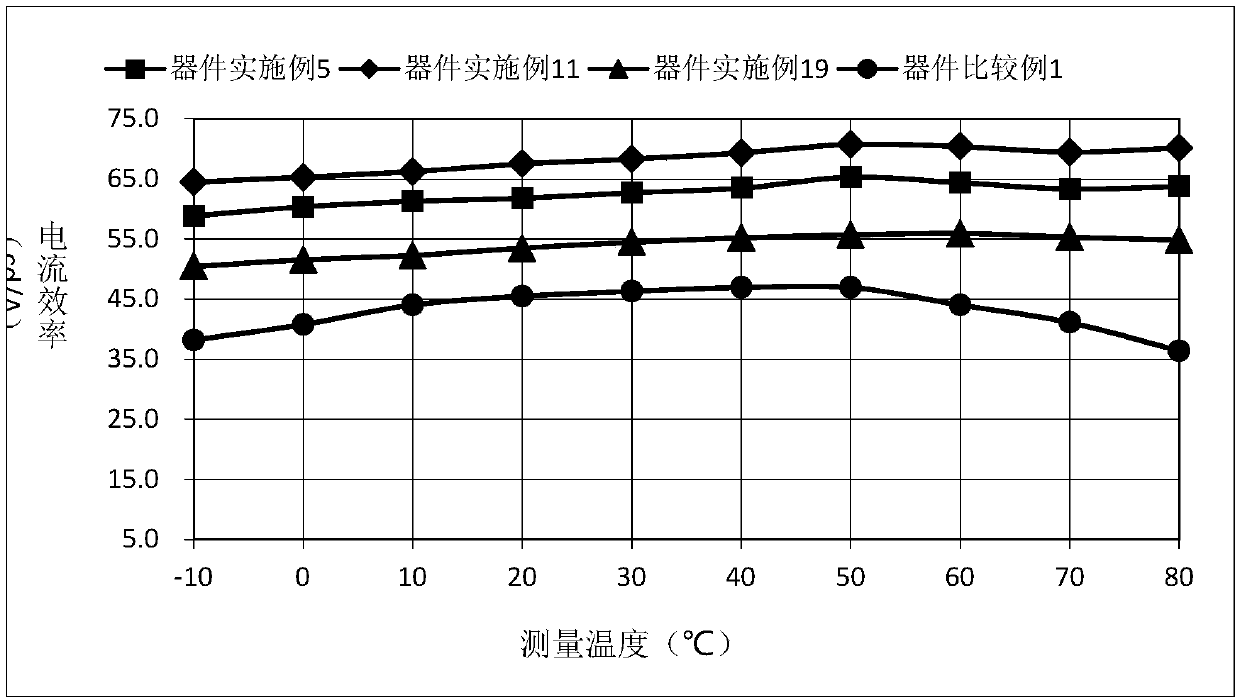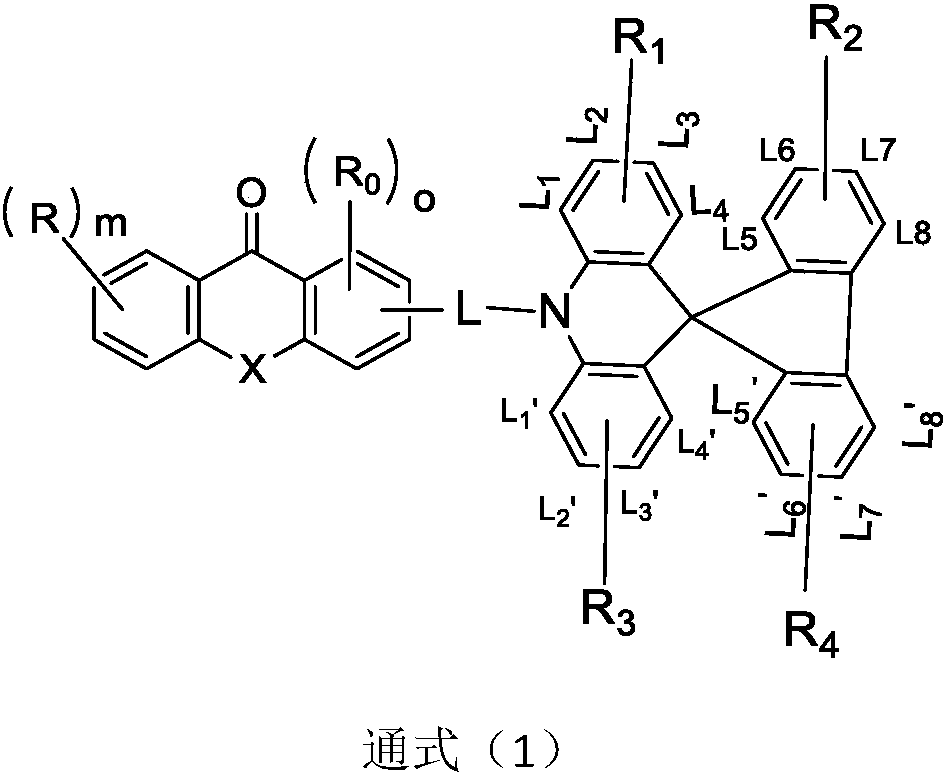Ketone-containing compound and application thereof in organic electroluminescent devices
A compound and luminescent technology, applied in the field of semiconductors, can solve problems such as efficiency roll-off, difficult exciton utilization, high fluorescence radiation efficiency, and low S1 state radiation transition rate
- Summary
- Abstract
- Description
- Claims
- Application Information
AI Technical Summary
Problems solved by technology
Method used
Image
Examples
Embodiment 1
[0113] Embodiment 1: the synthesis of compound H4:
[0114]
[0115] In a 250ml three-neck flask, under the protection of nitrogen, add 0.01mol raw material A1, 0.012mol intermediate D4, 150ml toluene and stir to mix, then add 0.03mol sodium tert-butoxide, 1×10 -4 molPd 2 (dba) 3 , 1×10 -4 mol of tri-tert-butylphosphine, heated to 110°C, refluxed for 24 hours, sampled and spotted on the plate, showed that no raw material A1 remained, and the reaction was complete; naturally cooled to room temperature, filtered, and the filtrate was subjected to vacuum rotary evaporation (-0.09MPa, 85°C ), purified through a neutral silica gel column to obtain the target product, the HPLC purity was 99.3%, and the yield was 58.7%;
[0116] Elemental analysis structure (molecular formula C 44 h 25 NO 3 ): theoretical value C, 85.84; H, 4.09; N, 2.28; test value: C, 85.88; H, 4.12; N, 2.31. ESI-MS(m / z)(M + ): The theoretical value is 615.69, and the measured value is 615.72.
Embodiment 2
[0117] Embodiment 2: the synthesis of compound H5:
[0118]
[0119] In a 250ml three-neck flask, under the protection of nitrogen, add 0.01mol raw material A1, 0.012mol intermediate D7, 150ml toluene and stir to mix, then add 0.03mol sodium tert-butoxide, 1×10 -4 molPd 2 (dba) 3 , 1×10 -4 mol of tri-tert-butylphosphine, heated to 110°C, refluxed for 24 hours, sampling plate, showed that there was no raw material A1 remaining, and the reaction was complete; naturally cooled to room temperature, filtered, and the filtrate was rotary evaporated under reduced pressure (-0.09MPa, 85°C ), purified through a neutral silica gel column to obtain the target product, the HPLC purity was 99.1%, and the yield was 67.9%;
[0120] Elemental analysis structure (molecular formula C 47 h 31 NO 2 ): theoretical value C, 87.96; H, 4.87; N, 2.18; test value: C, 87.99; H, 4.91; N, 2.23. ESI-MS(m / z)(M + ): The theoretical value is 641.77, and the measured value is 641.83.
Embodiment 3
[0121] Embodiment 3: the synthesis of compound H10:
[0122]
[0123] The preparation method of compound H10 is the same as in Example 1, except that intermediate D4 is replaced by intermediate D9.
[0124] Elemental analysis structure (molecular formula C 46 h 28 N 4 O): theoretical value C, 84.64; H, 4.32; N, 8.58; O, 2.45; tested value: C, 84.65; H, 4.31; N, 8.57; ESI-MS(m / z)(M + ): The theoretical value is 652.23, and the measured value is 652.37.
PUM
| Property | Measurement | Unit |
|---|---|---|
| thickness | aaaaa | aaaaa |
| thickness | aaaaa | aaaaa |
| thickness | aaaaa | aaaaa |
Abstract
Description
Claims
Application Information
 Login to View More
Login to View More - R&D
- Intellectual Property
- Life Sciences
- Materials
- Tech Scout
- Unparalleled Data Quality
- Higher Quality Content
- 60% Fewer Hallucinations
Browse by: Latest US Patents, China's latest patents, Technical Efficacy Thesaurus, Application Domain, Technology Topic, Popular Technical Reports.
© 2025 PatSnap. All rights reserved.Legal|Privacy policy|Modern Slavery Act Transparency Statement|Sitemap|About US| Contact US: help@patsnap.com



